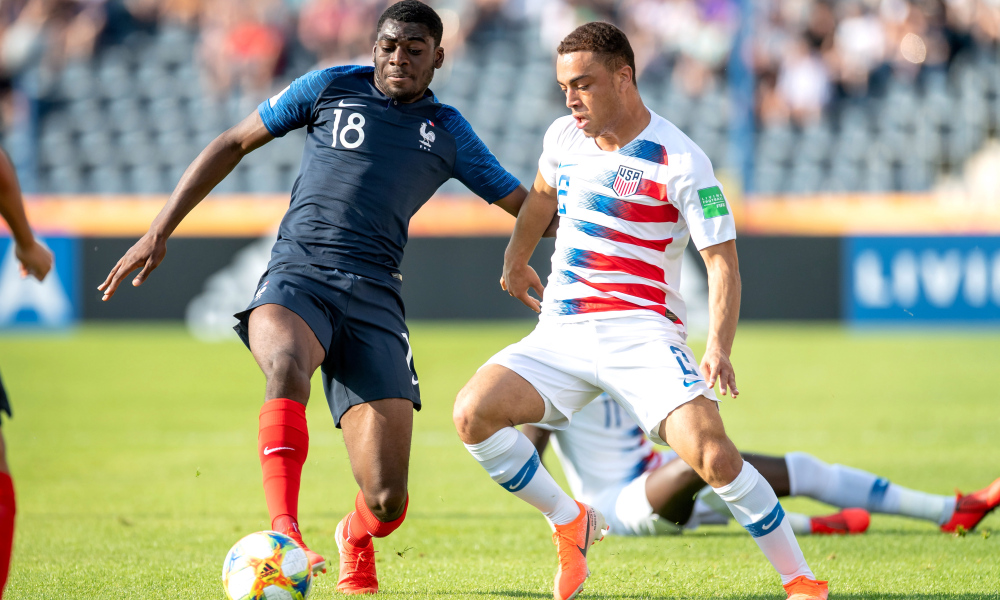Before you fill out that bracket, I am here to tell you who will win March Madness. Do you want bragging rights among your coworkers? Prove to your friend group that you are THE sports guru? Impress that girl that you have incorrectly assumed cares about how well your bracket did? This is the place for you.
The Future of U.S. Youth Soccer
With the end of the DA comes an end to the most confusing but semi-successful era of player development, the United States has seen. Well, it also depends on how you quantify success. On the one hand, there are now more American players in Europe's top-5 leagues, but on the other hand, the failure to qualify for the 2018 FIFA World Cup will forever go down as a monumental failure.

Before we move on to discussing what the end of the DA implies, let's address the grumbles of poor player development in the United States and how it should emulate other countries.
The United States cannot and should not seek to emulate anyone else's module of player development. The U.S. is in a unique position to allow kids to earn an education through the sport, and that is something that cannot be understated. It is why you see an influx of international players enter the college soccer system every year, recognizing the opportunity the country presents. Less than 1% of kids who play soccer make it at a professional level, in other countries, it's either soccer or school, leaving a large chunk of the other 99 percent stranded with no backup option. The United States cannot turn into yet another country that prioritizes the 1% over the whole.
Brazil is the country most often brought up as a shining example of player development. People highlight the Neymars, Kakas, and Ronaldinho's to speak on how great Brazil is at developing players. But what about the many more Brazilian kids who don't make it at that level? No education, no backup option. At least the United States soccer pathway includes a college education for the 99% who don't make it. Soccer is life, but it doesn't literally have to be life.
Now back to the DA.

Two months ago we wrote an article lamenting how the DA system adversely affects college recruiting, and with it now gone, the playing field is the most even its been in a decade-plus. There'll be another article highlighting the impact this move has on players, but for now, this article will focus on what it means for the American developmental system.
150+ DA Teams, players, and coaches now have no home. For now, the majority of those players return to high school and club soccer. The move was sudden and surprising, but with changes at the top of U.S. Soccer and the outbreak of COVID-19, this was the time to do it if it was ever going to be done.
The good news from this is that MLS teams will now be held more accountable for their role in player development. They are the only sanctified academies left, meaning they get to pull from all corners of the country to develop the next generation of national team players.

The end of the DA also affects the importance of college soccer in player development. There is a stigma out there that college soccer is bad for players but that only tells half of the story. With a proper system in place, college soccer could return to the impact it once had on professional soccer.
The best the U.S. has ever performed was at the 2002 World Cup, losing in the Quarter Finals to a Germany team that would go on to the final. Of the 23 players on that team, 17 of them played college soccer.
Ironically, the first time the U.S. missed the world cup in decades came after an emphasis on developing players away from college soccer. Correlation does not always equal causation, but it's worth thinking about.
As we've said before, with the right design and the right coaching, College Soccer could easily turn into what is essentially a U23 league for the best players to continue their development in prep for a professional career. It would take a revamp of the schedule, more funding, and more attention paid to the process, but it is possible.

You combine that with MLS Academies producing a higher caliber of players, and you have an organized pipeline that rivals any in the world. Club and high school soccer was never the problem to begin with. Player development is player development, and good and bad coaching will show no matter the system.
An end to the DA may turn out to be positive in the long run, it forces MLS academies to be more effective with player development, and it offers an opportunity for college soccer to be revamped and salvaged from what it is now.
For more on our college soccer series, click here:
College Soccer and the Ugly Truth
College Soccer and Youth Development
College Soccer and High School Recruitment
U.S. Soccer, Player Development, and the Perception of Clint Dempsey
Latest posts in our blog
Read what's new this week
On February 22nd in Riyadh, Saudi Arabia, we will witness one of the best cards in boxing history, with all seven fights on the card being title fights that would sell out arenas if they were the main event. The 'Last Crescendo' name is fitting for a card that gets more and more intense as the fights go on, with...
Social Media Has Ended Big Market Teams
It is time to rethink the way we think about sports and marketability. The global popularity of social media has fundamentally changed sports consumption and the idea of market sizes. The phenomenon fueling this belief is LaMelo Ball and what just happened with the NBA All-Star vote.




